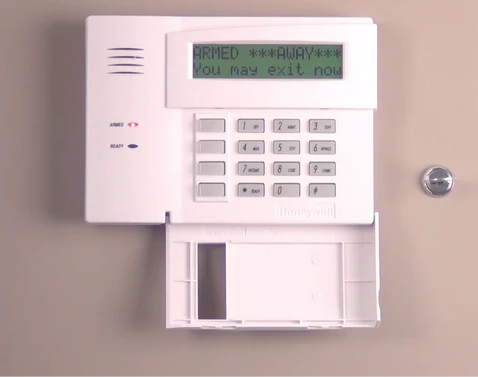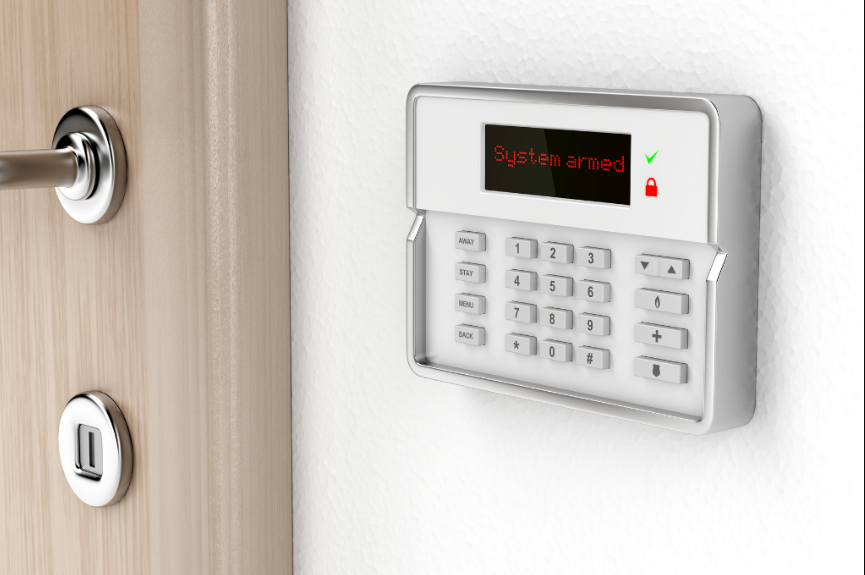1. Introduction: How to Change Your Honeywell Alarm Code
Another useful feature of any system model you choose is the ability to change the password for your Honeywell alarm system. Whether you’re upgrading your security or want to ensure that your code stays confidential this time, we will show you the exact steps necessary to change your home alarm code, which is a vital skill.
In this paper, we will discuss why it is important to learn the steps of changing your code, discuss the meaningful aspects of the process, and share some practical skills for ensuring the system’s security.
2. What is a Honeywell Alarm System?

The Honeywell alarm system is a state-of-the-art security device that shields your business or house from burglary or emergencies. Most modern security alarm systems consist of motion detectors, devices that sense intrusion through doors and windows, DOMINATING control panels, and other user-friendly controls. The systems are controlled by codes, which are set by factories, and a master code, which allows the user to set their own code.
3. Why is Changing the Alarm Code Important?
It is very important to evaluate different alarm codes regularly for security. This means it will be more difficult for other people to access your system without permission, especially after a relocation or service or when you feel your code has been compromised. As a security measure, it is also recommended to swap codes regularly if some problems don’t exist.
4. Step-by-Step Guide to Changing the Honeywell Alarm Code
Prepare Your Honeywell Alarm System
Get Your Honeywell Alarm System Ready Before doing anything, ensure your Honeywell alarm system is set and that you have the user manual. No instructions can assist you with model-specific queries.
Access the Keypad
Go to the Keypad Now, near your Honeywell keypad, and ensure your system is disarmed. This step ensures you do not disturb anything by changing your settings, and the alarm goes off.
Enter the Master Code
Put the Master Code in Boxes Your master code prepares you for the programming of the whole system. Most common default codes tend to be set as 1234 or other generic ones; however, if you have changed this information, input in your designated master code.
Select the “Programming” Mode
Then, you must click the master code and start working on the system programming mode. As per the various Honeywell models, you might need to click one of the buttons to enter this mode. When in programming mode, the keypad displays a confirmation of the system.
Enter the New Code
Enter a new code and click “accept”. You must select something really tough as well as difficult to crack. A phrase or combination of letters and numbers would work well. A code should be easy to memorize but difficult for others to crack, so choose wisely.
Save the Changes
A designated button can be used; for example, it is usually “#. ” While clicking, I need to ensure that I click the button to append the changes. This confirms the newly created settings and that my system’s new code is correct.
Test the System
Finally, using my new code, I shall test the system to see how effective it is and whether the task that I intended for it to do is being accurately performed. If whatever new system input you have worked on executes the tasks correctly, it indicates that the code has successfully been altered.
5. Troubleshooting Common Issues
Incorrect Code Entry
If I incorrectly enter my code, resulting in the system failing to complete my command, there shall be an option of an alarm. I shall enter my preferred code, ensuring to keep an eye on the number of attempts remaining, as entering the wrong password too many times locks the code.
System Not Responding
First, ensure the keypad is linked to the main panel and the system has a power supply. Second, check if the system has been reset or check the Troubleshooting section of the user guide.
Forgotten Master Code
You are out of luck if you do not remember your master code; you will have to follow the Honeywell systems reset steps. Remember, this most probably entails a factory reset, which might wipe out your preferred settings, and thus have a backup.
6. Tips for Choosing a Strong Alarm Code
Avoiding Common Mistakes
To improve your chances for success, avoid choosing alarm codes that are passwords that could be easy to guess, such as 1985, 1234, or combinations of repeated numbers. Can you keep it confidential? Don’t divulge the code to anyone who does not have a reason to know it, much less record it in a place where it can be easily found.
How to Keep Your Code Secure
Use letters and numbers to provide improved protection. A suggestion is to vary your code every few weeks. Each member of the family might have a unique code. The codes of some people can be removed without impacting the rest of the system once that person leaves.
7. When to Change Your Alarm Code

After a Break-In or Security Breach
If you suspect someone has tampered with your alarm system, you should immediately change your alarm code. Even if there is no intruder, it is better to be safe than sorry.
Periodic Security Audits
Review your home or business security every six months by changing alarm codes and testing sensors and the overall security system.
8. Expert Insights
“Regularly changing your alarm code is one of the most effective ways to prevent unauthorized access,” says home security expert Jane Doe. “A unique, frequently updated code ensures that even if someone gets hold of your code, they won’t be able to use it indefinitely.”
9. Practical Applications and Future Outlook
The great thing that worsening alarm security could easily lead to improvement is the Honeywell alarm systems. For example, future integration of home alarm codes with smart home controls could completely replace them altogether, and one might only be required to use an app or unlock them with a fingerprint. Reimagine your business or home with these new technologies to stay one step ahead.
10. Conclusion
In this post, we have discussed how to change the Honeywell alarm code. Updating your alarm code regularly is essential for securing your home or business. Following this guide, it’s clear that you can protect your interests easily and without too much hassle. Regularly changing your alarm code once a month, keeping yourself updated with relay-sounding bugs, and modifying your device per the latest technological updates are all helpful practices.
FAQ’s
[saswp_tiny_multiple_faq headline-0=”h3″ question-0=”How frequently can I change the code allocated to my Honeywell alarm system?” answer-0=”Ideally, you should only change your alarm code every 6-12 months or when an event requiring control over access arises, such as moving to a new location or a break-in, for instance.” image-0=”” headline-1=”h3″ question-1=”How can I hack the Honeywell alarm code if I accidentally forget it?” answer-1=”The master code may be retrieved by resetting the device back to its factory settings; the user manual should be consulted to know the options available for bypassing the restrictions. If you do this, there is a good chance it will delete all your customized settings, so back up your work if you can.” image-1=”” headline-2=”h3″ question-2=”Is it possible for me to set different codes for all of the other family members?” answer-2=”Yes, you are able to request additional user codes with the majority of Honeywell alarms. This helps to manage who uses the system and allows you to delete codes when they are no longer needed.” image-2=”” count=”3″ html=”true”]

1 thought on “How to Change Your Honeywell Alarm Code: A Complete Step-by-Step Guide”